Zukowo
- Gallery Two
. . . THIS MAY TAKE A MOMENT OR TWO . . .
- We are most grateful to a great Friend
of our Order
- Dr. Joanna Szczesna of the
Catholic University of Lublin Poland,
- for her help and comments below.
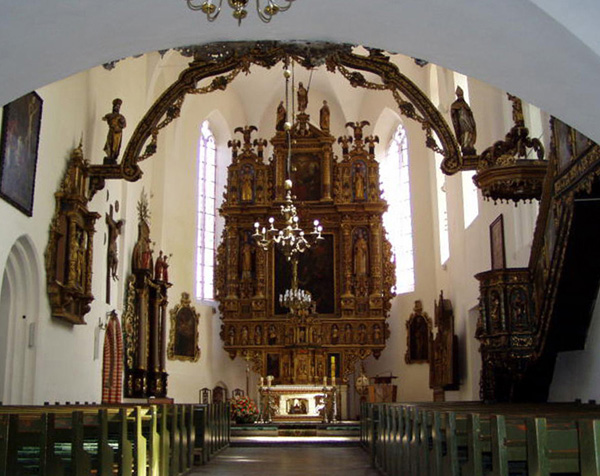
Interior
towards the high altar
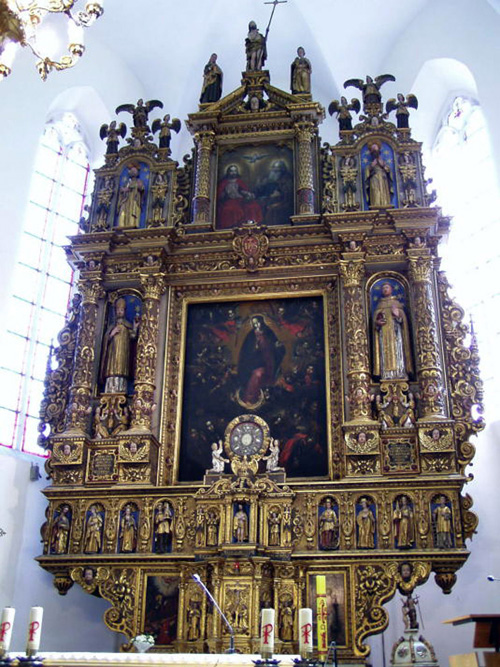
High altar
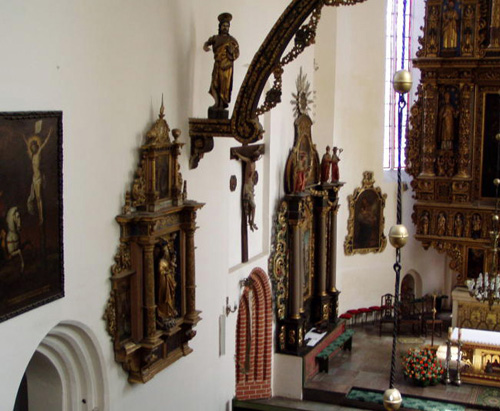
Interior from the choir loft
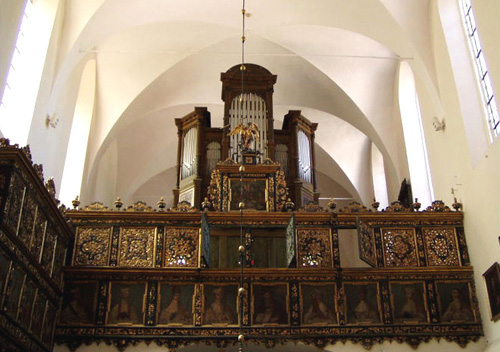
- Western
face of the choir loft parapet from the 1st half of 17th century.
- An
interesting feature of this parapet is that it shows paintings
- of Norbertine Saints
(see close-up below).
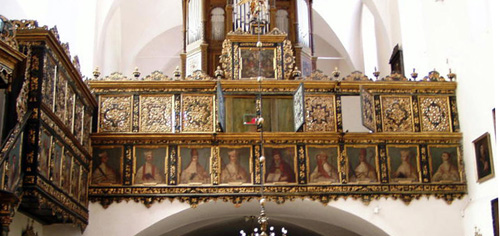
Here is a close-up of some of the
saints depicted.
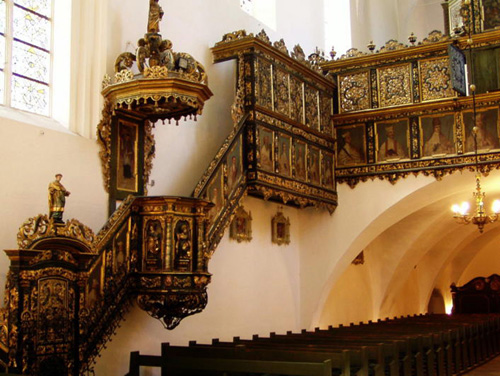
- Another
angle, showing the stairway ascending (and pulpit partway up),
- along
with more paintings of Norbertine saints.
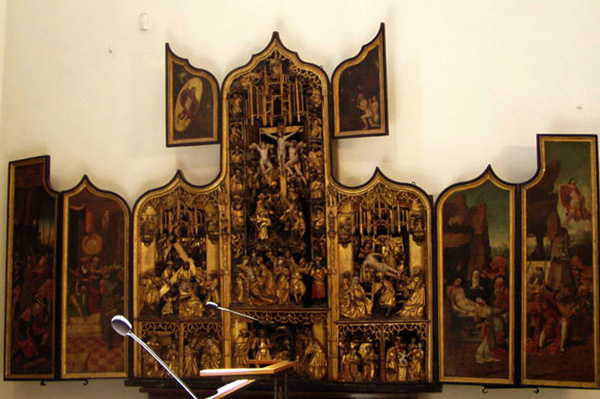
Antwerpian altarpiece, c. 1510-1520,
now in the Chancel
- A
threefold altarpiece closed with ogee arches originated in Antwerp.
- In
the central sphere, there are curved polyfigural scenes of the Passion of
Christ:
- The
Carrying of the Cross, The Crucifixion, The Deposition from the Cross.
- There
is an incorporated predella with the carved scenes: on the left there
is
- The
Annunciation and The Visitation,
on the right we have The Birth of
Christ
- and
The Offertory in the Temple. In
the centre, there is The Tree
of Jesse.
- On
the obverse of the two pairs of the painted folds, there are scenes
from
- the
passion cycle: The Captivation of
Christ, Christ in front of Pilate,
- The
Mourning and The Resurrection.
- On
the reverse, we see the scenes from the Old Testament: Moses
Brings
- Forth
Water out of the the Rock,
Collecting manna and
The Lord Sends Quail.
- On
the obverse of the upper folds there is the scene presenting
- Christís
Descent into Hell, on the reverse there are the representations of
angels.
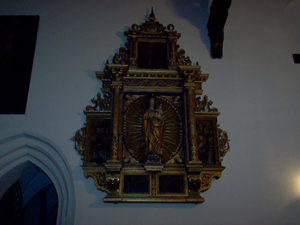
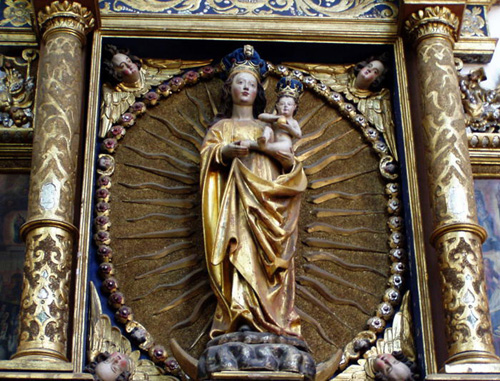
- Statue of the Virgin and
Child, c. 1500, polychrome wood, gilded, height 130 cm.
- Now in the
Holy Family
altarpiece from the first half of the 17th century.
-
- A
crowned
Mary is shown from the front, on her left forearm there is the naked
Child,
- also crowned and holding an apple in
both hands. She is wearing
a dress
- girdled above the waist with a large cleavage. The dress is
covered with
- a cloak. Mary is holding one of the flaps with her right hand
bent at
- the elbow. The folding is deep and in the shape of a triangle. The
dress is
- golden, her complexion is ivory and her hair is brown.
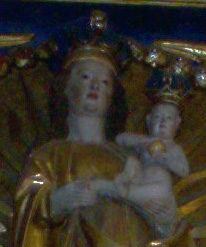
- This is a closeup of the the Statue of the
Virgin and Child,
- clearly showing the Child holding an apple.
This is an iconographic link
- with the vision of St. Hermann-Joseph, a 12th
century
- Premonstratensian mystic of Steinfeld Abbey.
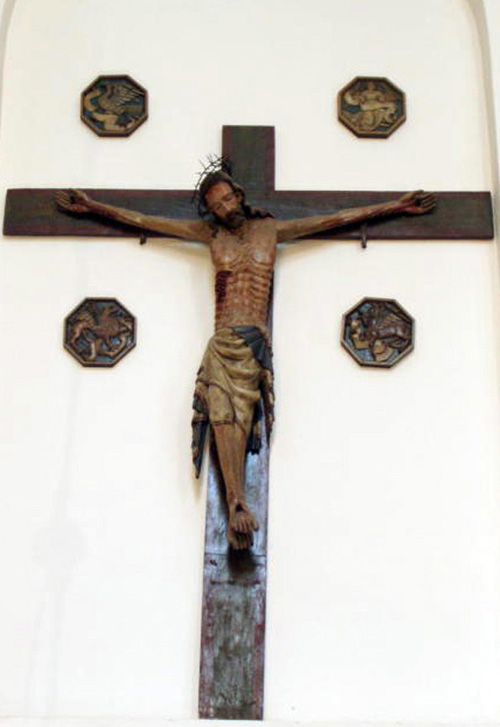
- Crucifix, 1st
half of 14th century, polychrome wood, height c. 200 cm.
- Placed above the entrance to the vestry.
-
- Initially, there were octagonal
bas-relief plates with the symbols of the evangelists
- on the limbs of the
cross. Presently, they hang on the wall next to the cross.
- Christ
with elongated proportions, His arms are stretched horizontally.
- His head
is leaning over the right shoulder and his eyes are closed.
- He has a beard
and long shoulder-length hair. The anatomical
- details such as the tense
veins of His arms and the outline of the ribs are exposed.
- A trail of
blood running down from the wounds in His hands,
- feet and the side has the
shape of racemes. He is wearing a
- knee-length perisonium with a vertical
double folding at the sides.
- The original polychrome was discovered during
the conservation work.
- His body is ivory with the shade of gray and is
covered with the bright
- red stains of blood. The blood from the wounds is
dark red. The hair and the
- beard are brown. The perisonium is white with
an azure lining decorated
- with small red and green flowers.
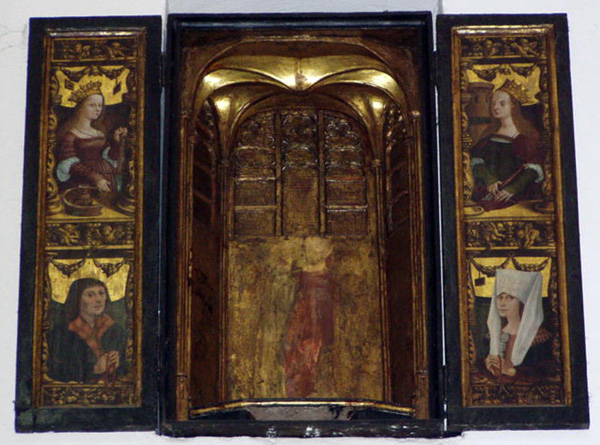
- Triptych of Mestwin
-
- It is dated 1515,
and is now placed on the
northern wall of the church nave.
- The central panel is in the form of a
gold vaulted niche. Originally there was a sculpted wooden
- figure of the Knight
- probably St. Florian or prince Mestwin, but it was stolen in 1969.
- On the
obverse of the wings, there are paintings of: St. Barbara and
probably
- Zwinislawa (Mestwin's wife) on the right and St. Katharine and Mestwin
(?) on the left.
- The holy virgins are crowned; Zwinislawa wears a white coif,
Mestwin is bare headed.
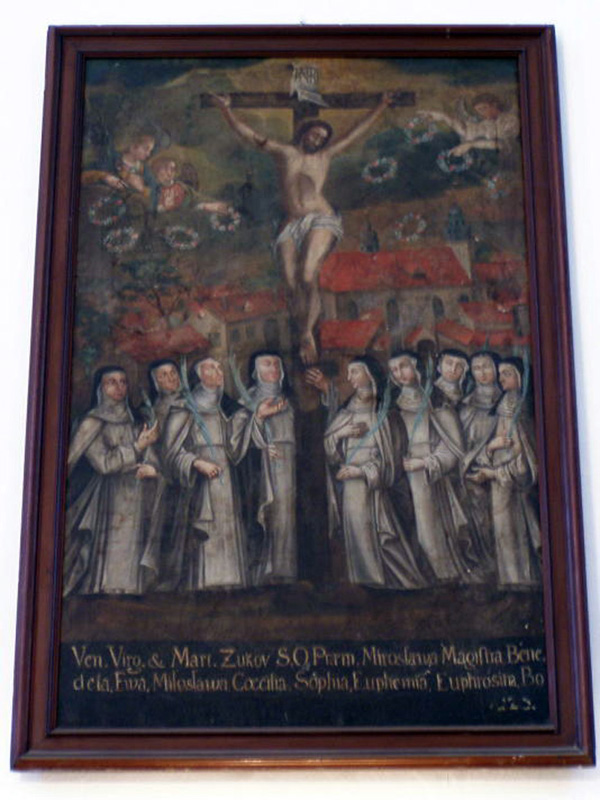
- Zukowo
Martyr-Sisters
-
- This
"group portrait" of
Sisters of Zukowo is an oil on canvas from 1773.
- It
commemorates the Sisters martyred during the Prussian invasion of 1224.
- At the bottom there is
an inscription with their names:
- Ven. Virg & Mart. Zukov SQ Praem. Miroslawa
Magistra Bene/deta,
- Ewa, Miloslawa, Caecilia, Sophia, Euphemia, Euphrosina
Bo(...).
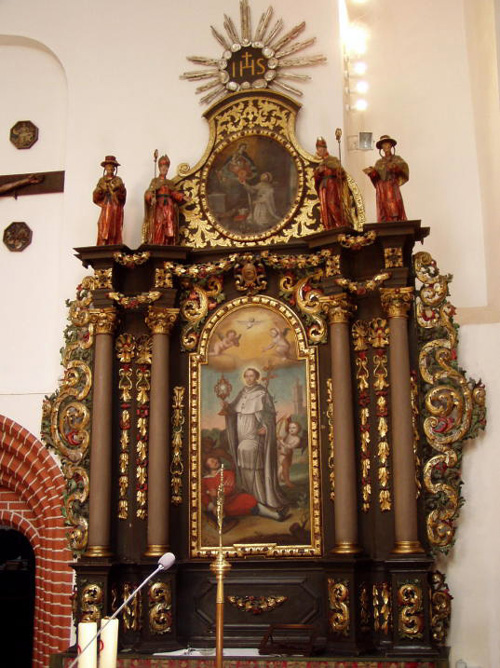
- Side altar (also 1st half of 17th century)
with a painting with typical representation of
- St. Norbert with Tanchelm (as I
suppose) at his feet.













